How to conduct heating in a private house: the choice of
Carrying out heating in a private house is a serious complex task, which includes many stages and works. These are design and selection of a particular heating system, selection of equipment and consumables, procurement and installation work, test pressure testing and system setup. We want to tell how to conduct heating in a private house.
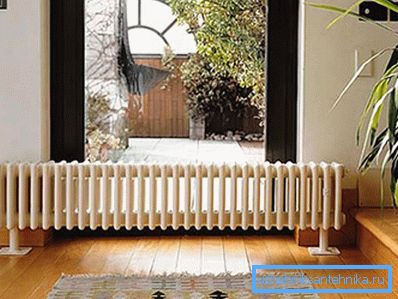
Preparatory stage
Design

At the preparatory stage, it is necessary to solve the most common and serious issues: calculate the amount of heat required for heating, determine the type of system, the layout of the coolant, the type of coolant and many other important problems.
Here you should take into account all possible nuances, such as:
- Climatic features of the region. These are average and peak temperatures, wind direction and strength, precipitation regime, etc .;
- Features of enclosing structures, roofs and foundations, as well as the level of thermal insulation of walls and tightness of doors and windows;
- Uninterrupted energy supply options. Before you start heating in a private house, you should find out the state of affairs in the energy market of your region, since the choice and configuration of the entire heating system strongly depends on the type of fuel used;
- Estimated mode of operation at home in winter. The episodic-short-term regime imposes somewhat different requirements than the permanent one;
- At the design stage, it is necessary to consider and take into account all possible savings. and the use of various, including alternative energy sources.

Note! The project is drawn up according to the established standards of SNiP and GOST, taking into account all the listed nuances. To engage in calculations and graphic design should competent specialist with the appropriate education.
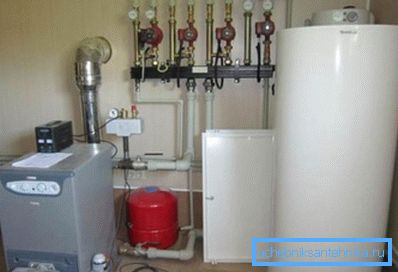
Here we want to make a few reservations.
Perhaps banal things will sound, but it is necessary to say them:
- The project is one of the most important and crucial stages of work, and disregard for the design is the best way to spoil the whole event in the bud;
- Most of the owners are concerned, first of all, with the quality of the installation, but one should not forget that the most expensive and irreparable errors are design errors;
- If you do not have a technical education and experience of calculations, then it is better to entrust this work to a professional. If you want to work yourself - for this there are many other opportunities. Savings in this case are risky and fraught with serious losses of funds.
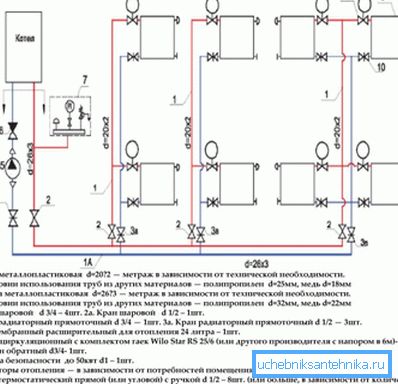
Note! A well-designed project should include a complete calculation of the system, a specification of equipment and materials, a graphic part (general and special drawings showing the radiator wiring paths and location of devices), an explanatory note, an estimate, an axonometric diagram. The title page must bear the stamp of the project organization and the signatures of the responsible persons.
Select the type of system
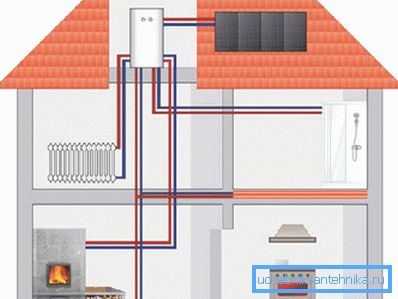
The choice of the type of heating system is an equally important step that can be attributed to the design. We singled out this stage, since this is where many questions arise.
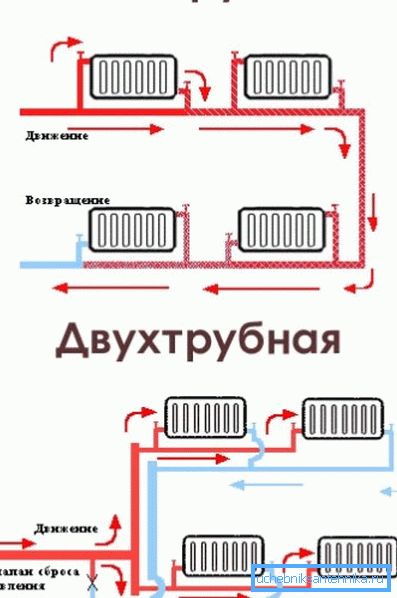
So, let's see what kind of heating systems are in general:
- By the nature of the wiring - one-pipe, two-pipe and collector. The first ones are cheaper and simpler, but the heating will be uneven and the efficiency is lower, the second ones allow to heat the area faster and more evenly, and the third ones are the most efficient, but also the most difficult and expensive;
- By type of coolant - water, steam, air, electric. As a rule, in private homes use water and / or electrical system. Water circuits are well known to all of us, and electrical systems consist of infrared heating panels, convectors and heaters of various designs;
- According to the method of movement of the coolant - with natural or forced circulation. The vast majority of modern systems operate on the principle of forced circulation, since it is much more efficient and more economical.
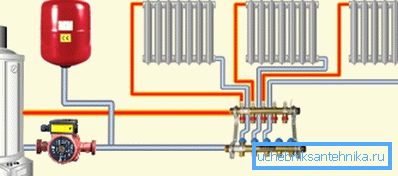
Note! The most popular and common option is a two-pipe or collector system with a heat transfer fluid and forced circulation. This choice is dictated by a number of objective reasons.
As the coolant using tap water or antifreeze. The use of antifreeze improves reliability of operation and reduces the corrosion load on the pipeline, however, requires proper calculation of pump parameters and the correct choice of materials for pipes and heating devices.
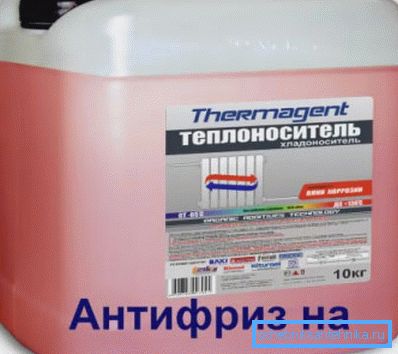
Note! The use of two-pipe and collector wiring heating allows you to adjust the flow of heat to each individual circuit or radiator. This makes it possible to organize a flexible and economical management system.
Selection of materials and equipment
Boilers
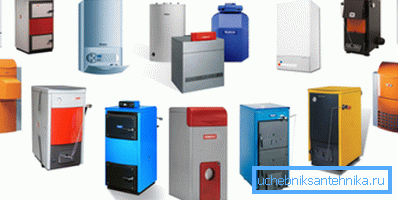
For a water heating system, the use of the boiler is mandatory. The boiler is a power plant in which the combustion of fuel to heat the coolant.
Modern market offers the following types of boilers:
- Gas. Use trunk gas or liquefied gas in cylinders;
- Solid fuel. Firewood, coal, fuel briquettes, pellets, woodworking industry waste, peat, straw, dead wood, etc .;
- Diesel. They use liquid petroleum products - diesel, diesel fuel, gasoline, various types of oils, fuel oil, etc .;
- Electric. Work on the electric power, use TEN or the electrode principle of heating.
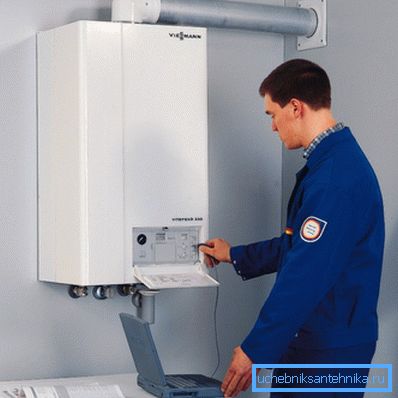
The most profitable gas boilers. If your site is connected to the natural gas supply line, then your choice is obvious: gas is several times cheaper than other types of fuel, its use is as convenient and efficient as possible.
Gas equipment is relatively inexpensive, its installation also does not cause difficulties, the only problem is the need for permission and participation of gas service specialists in connecting the unit to the pipeline.
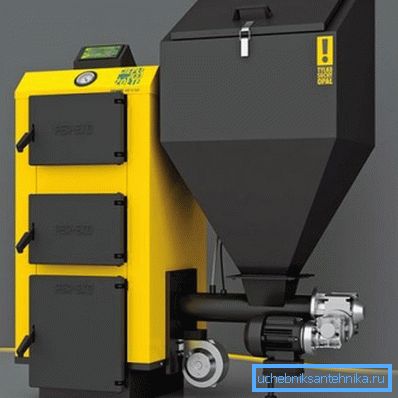
If your house is not gasified, then you should pay attention to solid fuel boilers. These are the second most inexpensive units of operation after gas.
The most cost-effective and convenient gas generator or pyrolysis apparatus. They allow you to drown the house on one tab of firewood for about 8 to 10 hours, which saves you from night shifts in the boiler room during the winter cold.
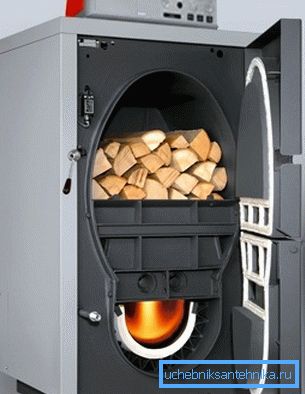
The disadvantages of solid-fuel devices are the need for manual control, manual fuel supply, manual cleaning of the combustion chamber and chimney. You will also need a dry room for storing firewood, delivery of firewood to the site and fire safety measures.
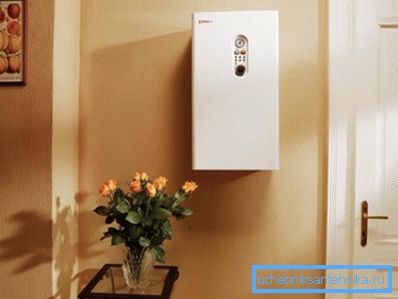
Electric boilers are the most convenient and technological, they allow you to fully automate their work. In addition, they are safe, environmentally friendly, do not produce ash, soot, smoke and other waste. The disadvantage is the very high price of electrical energy.
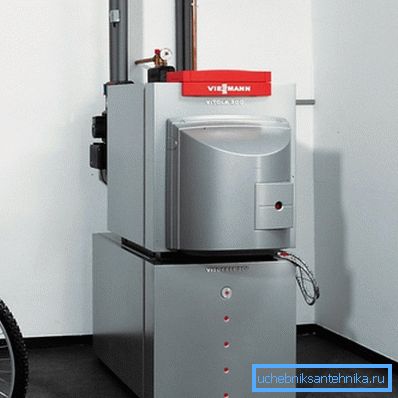
Diesel units are the most expensive to operate, as the cost of hydrocarbon energy is extremely high. You should also consider the cost of delivery, storage and fuel supply to the boiler tank. Heating with diesel fuel is the most expensive and irrational type of housing heating organization.
Pipes and radiators
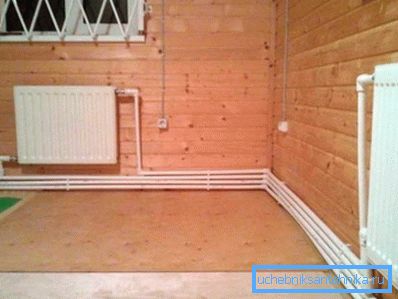
When we have a project according to which we have selected a heating boiler, we can proceed to the selection of heating appliances and pipes through which hot water will circulate.
The most common and common steel water pipes. Enough has been said about them, we only recall that they are durable, reliable, but they are afraid of corrosion, are overgrown with sediments and are rather difficult to mount.
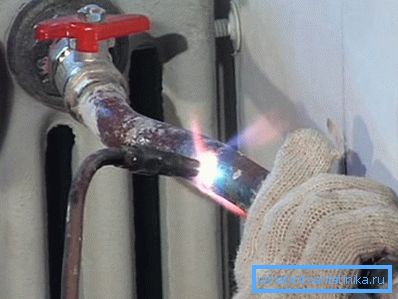
If you plan to do heating in a private house with your own hands, you should pay attention to plastic pipes. These materials are characterized by simple installation, low weight and no corrosion.
The most popular pipes made of polypropylene and cross-linked polyethylene, the latter being considered more reliable and high-quality, but their cost is also significantly higher. Installation of joints is carried out by soldering or cold fitting, which is much cheaper and easier to work with your own hands, rather than welding steel or copper pipes.
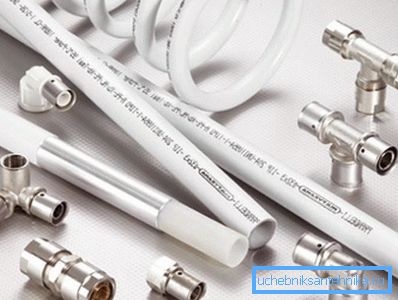
It should also be noted the possibility of posting pipes under the floor, behind the plinth, inside the walls in the gates, etc. Products made of cross-linked polyethylene can be bent and immured without inspection hatches. Modern versions of plastic pipes are fully suitable for use in heating systems.
Note! When choosing plastic pipes, be sure to specify that you need pipes for heating. They are characterized by the presence of reinforcement, composition and structure, they are designed to transport hot substances at a certain pressure.
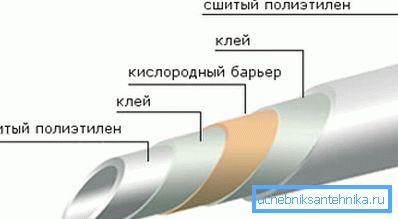
Heating devices for the water system are represented by several types:
- Cast iron or steel radiators;
- Steel flat panels;
- Aluminum or bimetallic tubular convectors.
Batteries are characterized by high reliability and good performance. They are most common and familiar to anyone who has ever visited a Soviet city apartment.
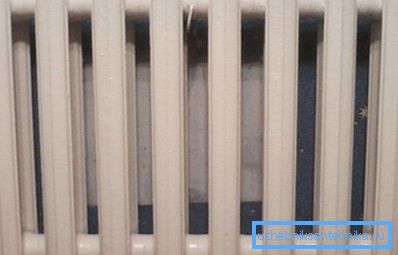
Sheet steel welded panels are the least efficient and reliable type. They show rather low productivity and quickly become unusable due to corrosion and structural defects.

Convectors made of aluminum or a combination of aluminum and anti-corrosion steel are among the most high-quality and efficient heating appliances.
Pure aluminum models are suitable for small local systems with high-quality coolant and a well-functioning system. For conditions of central supply or high loads, a bimetallic version should be purchased

Note! When choosing bimetallic devices, it is important to find original products made by well-known companies. If the technology is not maintained, or poor quality materials are used, then it is dangerous to operate such batteries.
Conclusion
The construction of the heating system is a complex, multi-stage task, and the success of the whole event depends on the quality of the work performed at each stage. We reviewed the general procedure, if you are interested in details - you can find all the necessary materials on our website, including videos and step-by-step instructions.